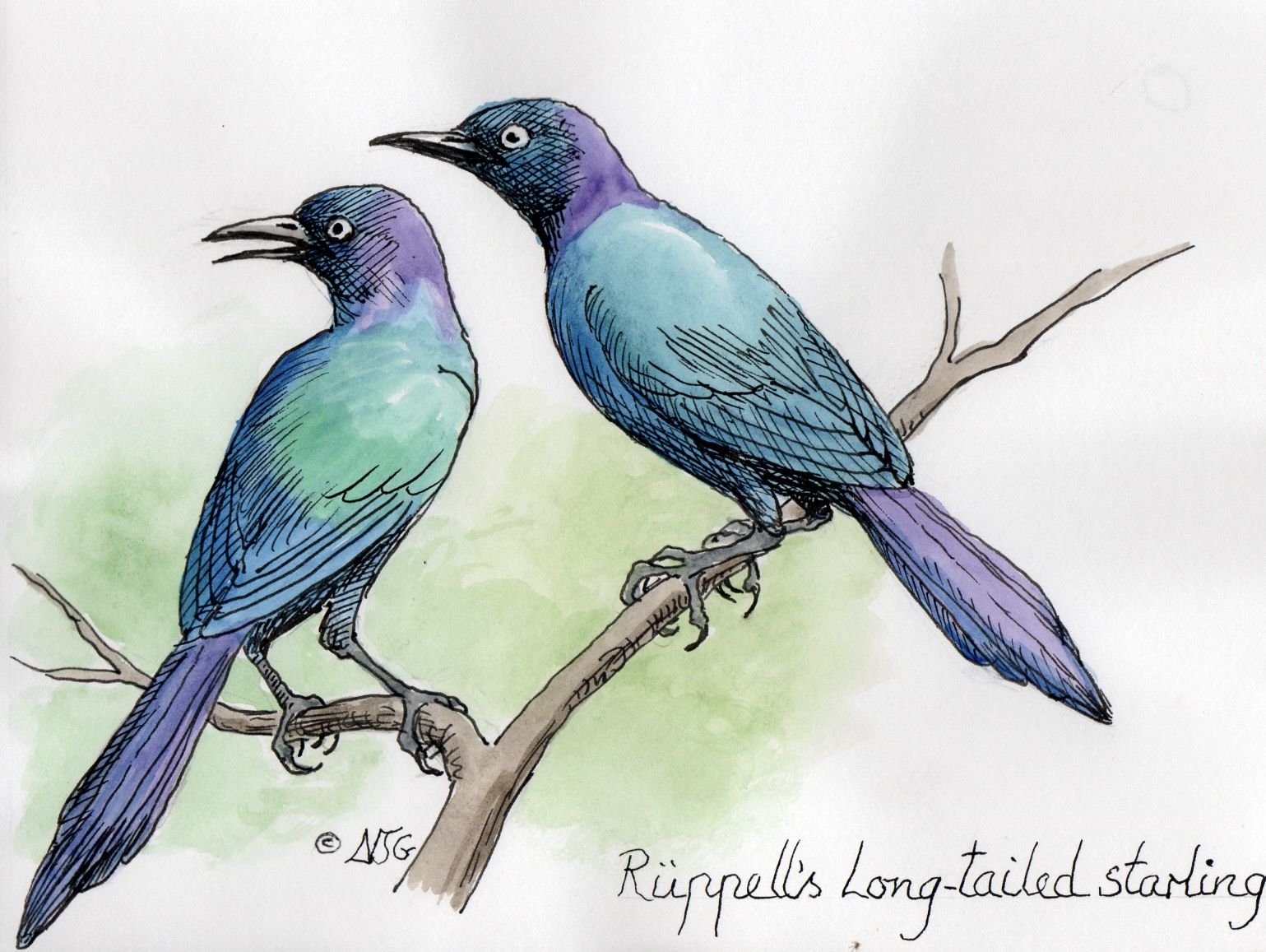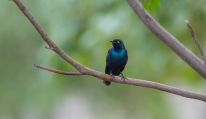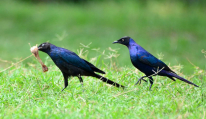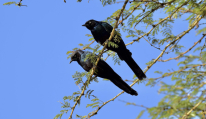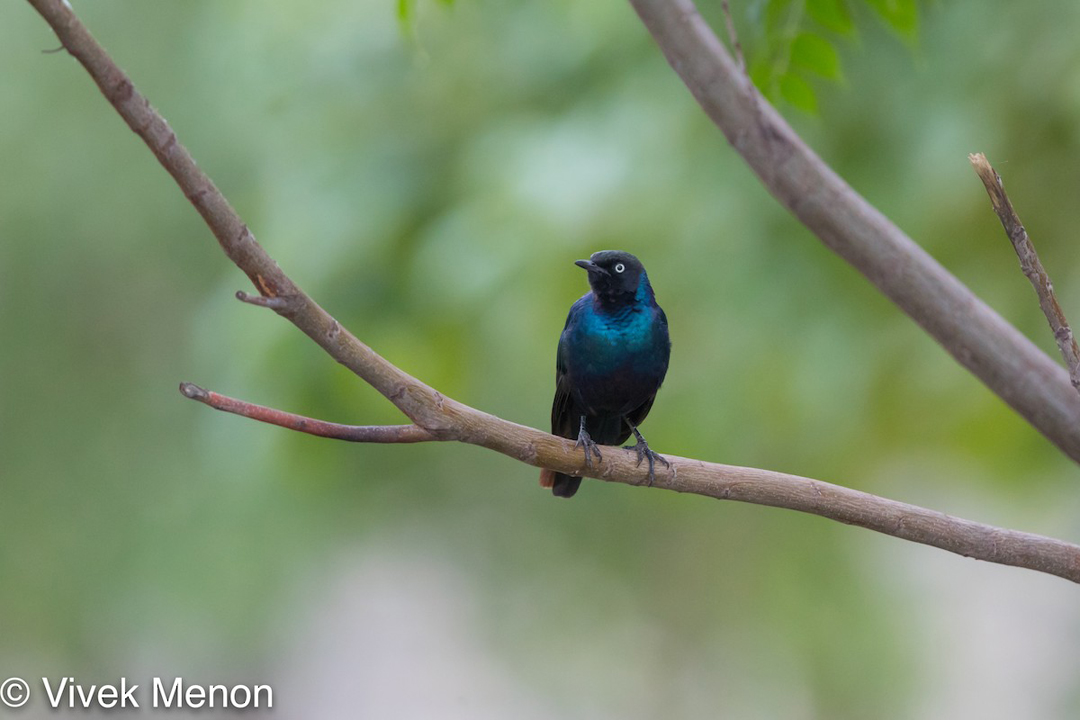Social Structure
These birds are often found in small flocks.
Communication
Rüppell’s starlings have a range of songs that includes harsh sounds, sweet notes, and some mimicry. They can sometimes be heard in the middle of the night.
Behavior
Active during the day, they are ground foragers that are always in motion, often in pairs or small groups.
Conservation
Least concern
Diet
These starlings forage for insects and fruit, and look for food scraps at camp sites.
Breeding
Monogamous pairs nest in tree holes or in holes formerly occupied by woodpeckers, and line nests with dung and sticks. While both parents incubate the eggs, females more often feed the chicks and are sometimes assisted by offspring from a previous brood.
Population in Kenya
This bird, like other starlings, is common in Kenya.
Range & Habitat
These birds are found in some parts of Ethiopia, Sudan, Eritrea, Congo, Uganda, Rwanda, Burundi, Kenya, Somalia, and Tanzania.
Rüppell’s starlings prefer grasslands with some trees that are located near water, as well as cultivated lands and urban areas.

